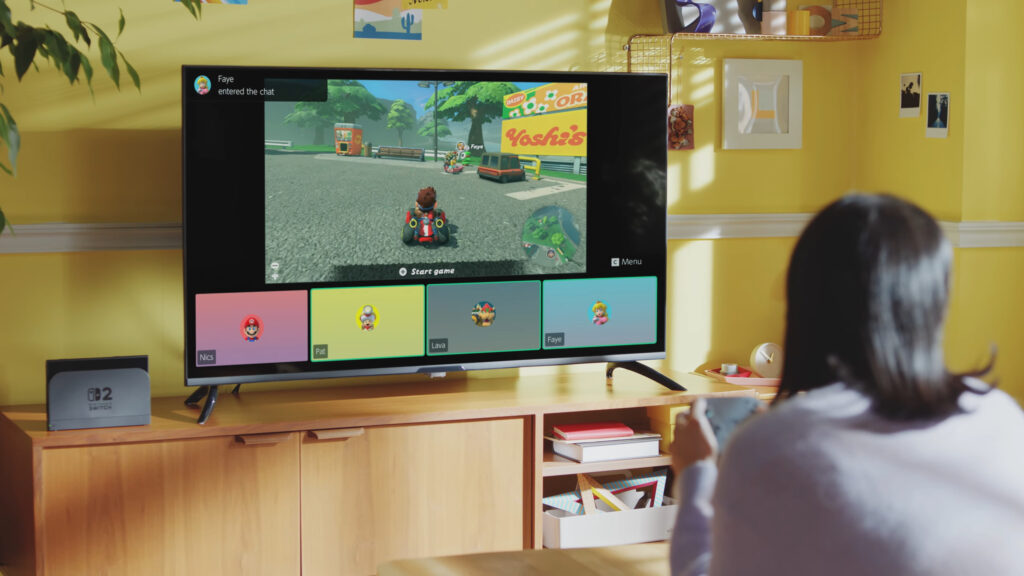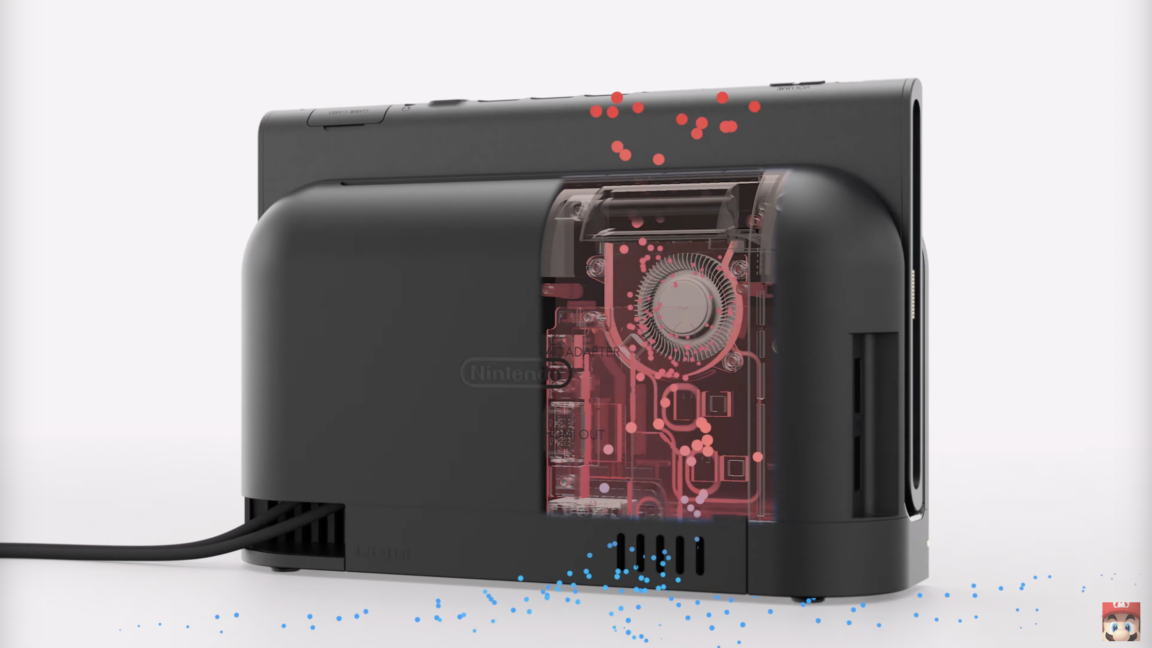Digital Foundry also says Game Chat "has a significant impact on system resources."
While Nintendo offered an official spec sheet for the Switch 2 last month, neither it nor an accompanying blog post from chip-making partner Nvidia provided many specific numbers for the upcoming console's raw CPU and GPU horsepower. Today, though, Digital Foundry is offering what it calls "rock-solid confirmation" of the system's final tech specs, adding detail and clarity to years-old leaks and educated speculation on the system's internals (which turned out to be largely reliable in the end).
Unlike the Switch—which basically used an off-the-shelf Nvidia Tegra T1 chip—Digital Foundry says the Switch 2 is using "very much custom silicon designed specifically for Nintendo and for mobile gaming." You can see what that means in terms of raw hardware performance in the tables below.
| Switch 2 | Switch | |||
|---|---|---|---|---|
|
Docked (Quality) |
Undocked (Performance) |
Docked (Quality) |
Undocked (Performance) |
|
| CPU clock | 998 Mhz | 1101 Mhz | 1020 Mhz | 1020 Mhz |
| GPU clock | 1007 Mhz | 561 Mhz | 768 Mhz | 460 Mhz |
| Ray-tracing | 20 gigarays/sec | 10 gigarays/sec | N/A | N/A |
| Memory bandwidth | 102GB/s | 68GB/s | 25.6GB/s | 21.3GB/s |
| Switch 2 | Switch | |||
|---|---|---|---|---|
| Total |
System (reserved) |
Total |
System (reserved) |
|
| CPU cores | 8 | 2 | 4 | 1 |
| Memory | 12GB (LPDDR5X) | 3GB | 4GB | 0.8GB |
| Switch 2 | Switch | |
|---|---|---|
| CPU architecture | 8x ARM Cortex A78C | 4x ARM Cortex A57 |
| GPU architecture | Ampere | Maxwell |
| CUDA Cores | 1536 | 256 |
| Memory interface | 128-bit/LPDDR5 | 64-bit/LPDDR4 |
Glancing at those numbers, it's easy to pick out a large difference between the system's performance in docked and undocked modes; its GPU clock and memory bandwidth both increase substantially when plugged into a TV. Those differences could help explain why the Switch 2 dock uses an active cooling fan, unlike the much simpler TV-connection dock on the original Switch.
To put the gap in a bit more context, the Switch 2's miniaturized Ampere GPU is rated for 3.072 TFLOPs when docked, versus just 1.71 TFLOPs while undocked. While those kinds of numbers aren't great for direct comparisons to other gaming devices, they do highlight just how much potential graphics horsepower Switch 2 players will be giving up when playing away from a TV.
Oddly enough, the Switch 2 CPU clock speed actually increases when the console is played outside the dock. While there's no official explanation for this oddity, Digital Foundry theorizes it could be an attempt to partially make up for the system's lower memory bandwidth when undocked.
Digital Foundry also notes that the Switch 2's stated clock speeds can be tuned to higher theoretical maximums: 1.4 GHz for the GPU and 1.7 GHz for the CPU. Nintendo could eventually make use of this headroom for improved graphical performance and faster loading screens, as it did on the original Switch in 2019. And while developers can adjust the GPU clock rate used by their games, it's unclear if they'll be able to directly overclock to the theoretical maximum themselves.
System resources
As on the original Switch, 25 percent of the CPU cores and overall memory on the Switch 2 is reserved by the system for OS features and is thus inaccessible to game developers directly. Digital Foundry also notes that some GPU resources are reserved by the system OS, though it didn't provide a precise measurement for this amount.

This time around, those system-level features include Game Chat, which offers the ability to stream gameplay and/or webcam video from up to four friends to a single system. Even with significant resources set aside by the OS, though, Digital Foundry notes that Game Chat has "a significant impact on system resources," leading Nintendo to provide developers with a testing tool that "simulates API latency and L3 cache misses" that can happen when Game Chat is in use.
Aside from the core pixel-pushing hardware, the Switch 2 also adds a new separate File Decompression Engine, which can handle loading game data off of the system's 256GB of on-board UFS memory and MicroSD Express expansion cards without taxing the CPU. And while the Switch 2's portable screen includes support for variable refresh rates up to 120 Hz, there is currently no official support for VRR on HDMI displays connected to the system's dock.
While it's fun to look at numbers, the real proof of the Switch 2's hardware power will be in the performance of its games. We look forward to having more direct comparisons of software performance when the console launches next month.
Hope you enjoyed this news post.
Thank you for appreciating my time and effort posting news every day for many years.
News posts... 2023: 5,800+ | 2024: 5,700+ | 2025 (till end of April): 1,811
RIP Matrix | Farewell my friend ![]()



3175x175(CURRENT).thumb.jpg.b05acc060982b36f5891ba728e6d953c.jpg)
Recommended Comments
There are no comments to display.
Join the conversation
You can post now and register later. If you have an account, sign in now to post with your account.
Note: Your post will require moderator approval before it will be visible.